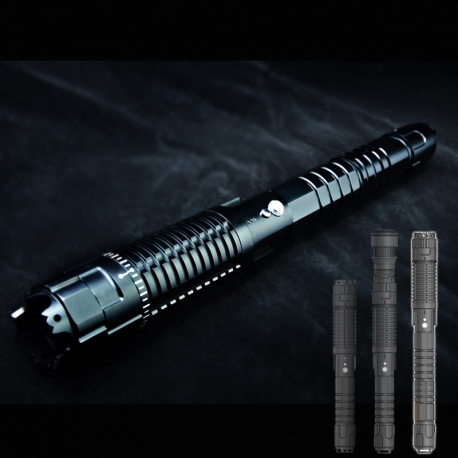Due to the narrow line width and low noise of the single-frequency laser, it means that it is more sensitive to high-precision vibration, and the long coherence length ensures the accuracy of long-distance sensing. Therefore, the single-frequency laser has high precision/high sensitivity/long distance Sensing systems, next-generation communication technology, coherent technology, remote sensing technology, coherent lidar and other fields have outstanding advantages.
Four key performance indicators for single-frequency lasers. The main performance indicators of single-frequency fiber lasers include phase noise, relative intensity noise (RIN), line width, wavelength stability and frequency drift. The so-called phase noise means that the spectrum line of the laser light emitted by a single-frequency laser is no longer a single line, but has a certain width. The size of this width reflects the level of phase noise of the single-frequency green laser pointer. The specific manifestation of phase noise is: taking the observation point as a reference, the light wave randomly fluctuates or delays in phase with time. Phase noise is one of the most important parameters to measure single-frequency lasers, and has an important influence on the linewidth of single-frequency lasers.
Relative intensity noise refers to the ratio of the average output power of the laser to the noise at a certain frequency. In practical applications, the relative intensity noise of single-frequency lasers is often used as an important noise source, affecting the background of coherent detection systems (such as continuous working coherent Doppler wind lidar, phase-sensitive OTDR system demodulation system) Noise level.
The linewidth of a single-frequency laser is a concept in the frequency domain, which can be understood as the linewidth of the spectrum. From the description of the phase noise of the single-frequency laser, it can be concluded that the phase noise can directly reflect the linewidth of the single-frequency laser. The linewidth test of a single-frequency laser is usually carried out by a delayed self-heterodyne unbalanced M-Z interferometer. The linewidth test is related to the integration time (or the length of the delayed fiber).
Wavelength stability and frequency drift are intuitive manifestations of single-frequency laser performance. Because the single-frequency fiber laser has a long resonant cavity length, it uses a key component that is sensitive to temperature, strain and vibration-fiber grating, and its wavelength stability or frequency drift is a challenge. Comparison of the advantages and disadvantages of four mainstream single-frequency fiber lasers. It is understood that the current mainstream single-frequency fiber lasers are mainly divided into two categories: short straight cavity type and ring cavity type.
Among them, the single-frequency fiber laser with short straight cavity structure includes distributed feedback (DFB) type and distributed Bragg reflection (DBR) type; while the single-frequency fiber laser pointer with ring cavity structure has many configurations, and currently more mature and commercially available technologies include ” There are two kinds of “virtual ring cavity optimized traveling wave cavity” technology (represented by Shanghai HannStar). The distributed feedback (DFB) single-frequency fiber laser has the advantages of simple structure and easy realization of single longitudinal mode output; strong anti-interference ability; low cost and suitable for batch applications.
